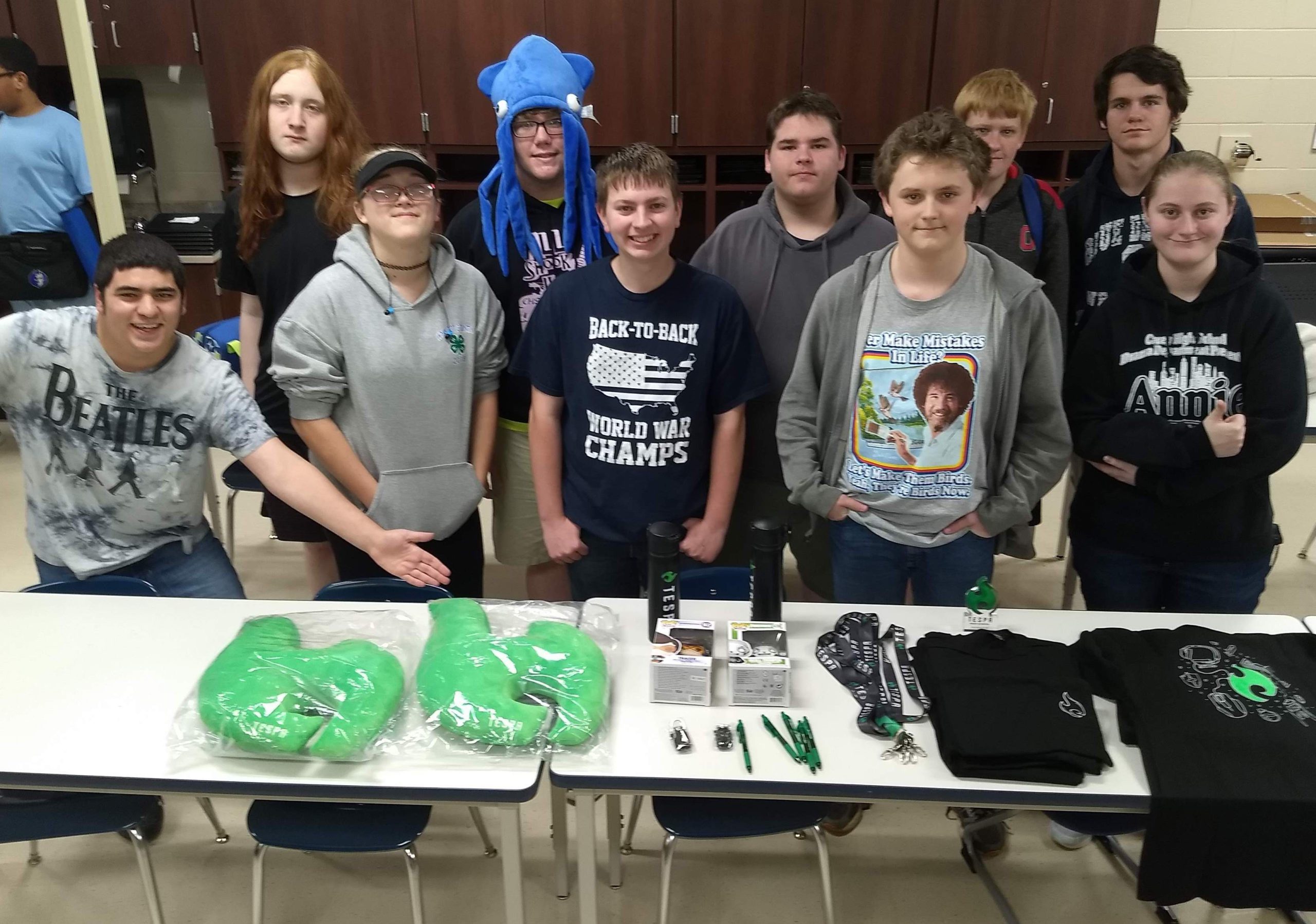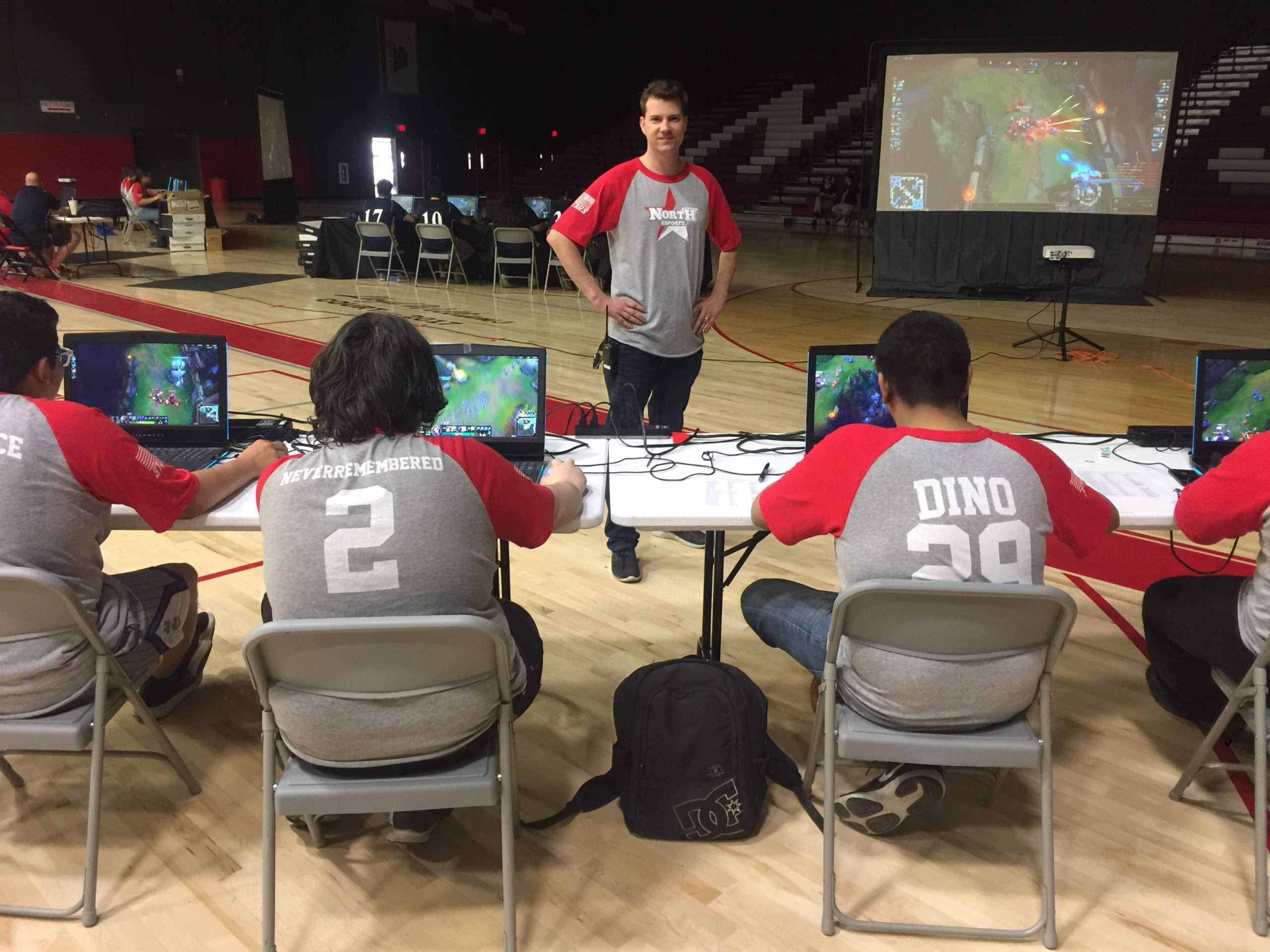If 2018 was known as the Wild West in K-12 esports, 2019 has become the year of “manageable chaos,” technology directors say.
Esports, or competitive video gaming, continues to surge in popularity in K-12 and higher education, sparking massive in-person and online tournaments. Esports is also providing new opportunities for students to get involved at school, and in some cases is helping participating high school students land college scholarships.
Here, K-12 esports pioneers share recommendations for hardware, software, bandwidth and digital security. Whether your school offers gaming as an official sport or as an after-school club, consider this guidance when creating and scaling a competitive and engaging program.
Students build hardware for esports in schools
Most schools purchase computers, graphics cards and power supplies based on the most resource-intensive game their students will play.
For schools starting from scratch, a Nintendo Switch hand-held console and a copy of the Super Smash Bros. Ultimate game is a relatively inexpensive way to get a middle or high school esports program off the ground, says Steve Isaacs, a game design teacher at William Annin Middle School in New Jersey’s Bernards Township School District.
On the other hand, Overwatch—a multiplayer, first-person shooter developed by Blizzard Entertainment—is often one of the most demanding (and popular) games. IT teams will follow the company’s suggested specifications—a minimum of 4GB RAM per unit for gameplay and 6GB for the highest performance.
DATV video: Watch tech-ready esports teams in action
Administrators at Carey Exempted Village School District in Ohio opted for 5GB. “That ensured we have wiggle room for actual play” above the minimum, says Nick Rider, Carey’s technology director and founder of Esports Ohio, an educational nonprofit that connects video gamers at schools across the state.
District leaders gave Rider and his students $5,000 to build six esports computers from scratch. Rider also created lessons around computer memory, ventilation and monitor frame rates for students to follow as they installed solid-state drives and 8GB graphics cards. “If you have a CAD lab, you’re more than likely ready to go,” he says.
Schools can future-proof their computers by buying video cards that may exceed even a demanding game’s visual requirements, adds Isaacs, who presented at the 2019 Future of Education Technology Conference® and addressed embedding social-emotional learning in Minecraft.
“And there are so many other parts for students to play in esports; kids can livestream and ‘shoutcast,’” says Isaacs, using the esports slang for play-by-play commentary. For each of those roles, a student would need a webcam and a microphone, which Isaacs purchased together for about $150.

Esports Ohio has created a specifications guide for schools that join the statewide league. The guide includes suggestions about what gear—such as core processors and motherboards—to buy and which factory-built computers meet requirements.
On a national level, the High School Esports League (HSEL) provides a starter guide with infrastructure suggestions for schools’ IT departments. The group also offers a textbook, Gaming Concepts, that covers lesson plans for esports directors to incorporate into competitions.
Stay in the loop on software
Most esports programs compete in a handful of widely played games, including League of Legends, Overwatch, Rocket League and Super Smash Bros. Ultimate. School district leaders select games based on student preferences and on the titles played in college competitions.
Some games are free, such as League of Legends, and others cost from $20 to $60 for a per-person or per-computer license. All are typically stored on one computer.
School leaders also need to know how many players can join a game so teams have enough computers (e.g., six-player Overwatch teams need six computers). IT teams also must track how often the games need to be updated with patches so computers remain ready for gameplay.
Sidebar: Do you know the system requirements for esports in schools?
“This is a big reason to make sure you keep your IT department in the loop because installing software on the computers is a hands-on process that you have to do manually as compared with automatically deploying updates to Chrome or Office,” says Sean Foster, district systems administrator for Bryant Public Schools in Arkansas.
At the league level, organizations such as HSEL and PlayVS (used by Bryant Public Schools) operate online platforms that manage competitions and allow players to create profiles, which are updated as students move through the season toward tournaments. Coaches can post rosters for their teams, suspend players with GPAs that fall below required minimums, schedule tournaments and report scores.
Don’t overload your network
Depending on the program’s size, technology directors must determine whether new wireless ports should be installed or opened to allow for gameplay. At the Carey Exempted Village School District, gaming start times are often staggered to allow the varsity, junior varsity and club teams to take turns playing on the six machines—which are hard-wired to the internet to reduce lag and to allow for the best latency.
At Carey schools, tech staffers installed a dedicated wireless port for students who play Smash and must bring their portable Switch consoles to school. The port creates a smooth, secure connection that is separated from potentially sensitive information on other school networks. “The key is to make sure the students have a level playing ground and can stay competitive,” says Rider, the tech director.

Students at North High School in Bakersfield, California,
only play against other schools in the Kern High School District, which has 16 esports programs.
At North High School in Bakersfield, California, students only play against other schools in the Kern High School District, which has 16 esports programs. The high school hosts an in-person tournament each semester that draws more than 250 students, so the IT team equips 100 computers across campus with the proper hardware and software, and brings in extra district laptops for students to play at wireless hubs.
At the last tournament in April, the esports coaches staggered the logins so students could join without overloading the servers. “This way, it doesn’t look like a large hack is attacking the school with everyone logging on within the same five minutes,” says Justin Smith, North High’s esports coach.
Some pointers on privacy
Careful attention at several levels can ensure student privacy, as mandated by the Family Educational Rights and Privacy Act. Since students are playing online, parents and administrators should know what personal information is collected, stored and used by third-party distributors.
First, technology directors should check whether their vendors’ policies protect students. Many of the most popular games have strong security measures that restrict the types of information collected. Many games store the data behind two-factor authentication and industry-standard secure socket layer encryption technology, as stated in the PlayVS privacy policy.
Read more: E-sports in schools primed to grow ‘bigger than the NFL’
Each student can control what information is included in their profile, including name, age, graduation year, jersey number and esports position, as well as data stored on the back end of the site, such as email address, mailing address or school name.
Some school districts use their standard privacy release forms to get students’ and parents’ permission to publish students’ names and faces on public rosters (similar to the requirements for athletic programs). This often includes permission to record and broadcast regularly scheduled events.
Leaders of esports programs that compete in statewide and national leagues should also investigate the privacy policies adopted by those leagues. Since the most popular leagues, such as HSEL and PlayVS, were built for high school teams, the terms tend to be strict regarding what student information is shared.
Overall, if the games and distribution services have their own privacy policies and line up with other sports and activities regulated at the district and state levels, a school’s esports program should be covered.
Carolyn Crist is a writer in Athens, Georgia.
Interested in esports? Keep up with LRP’s Academic Esports Conference.







